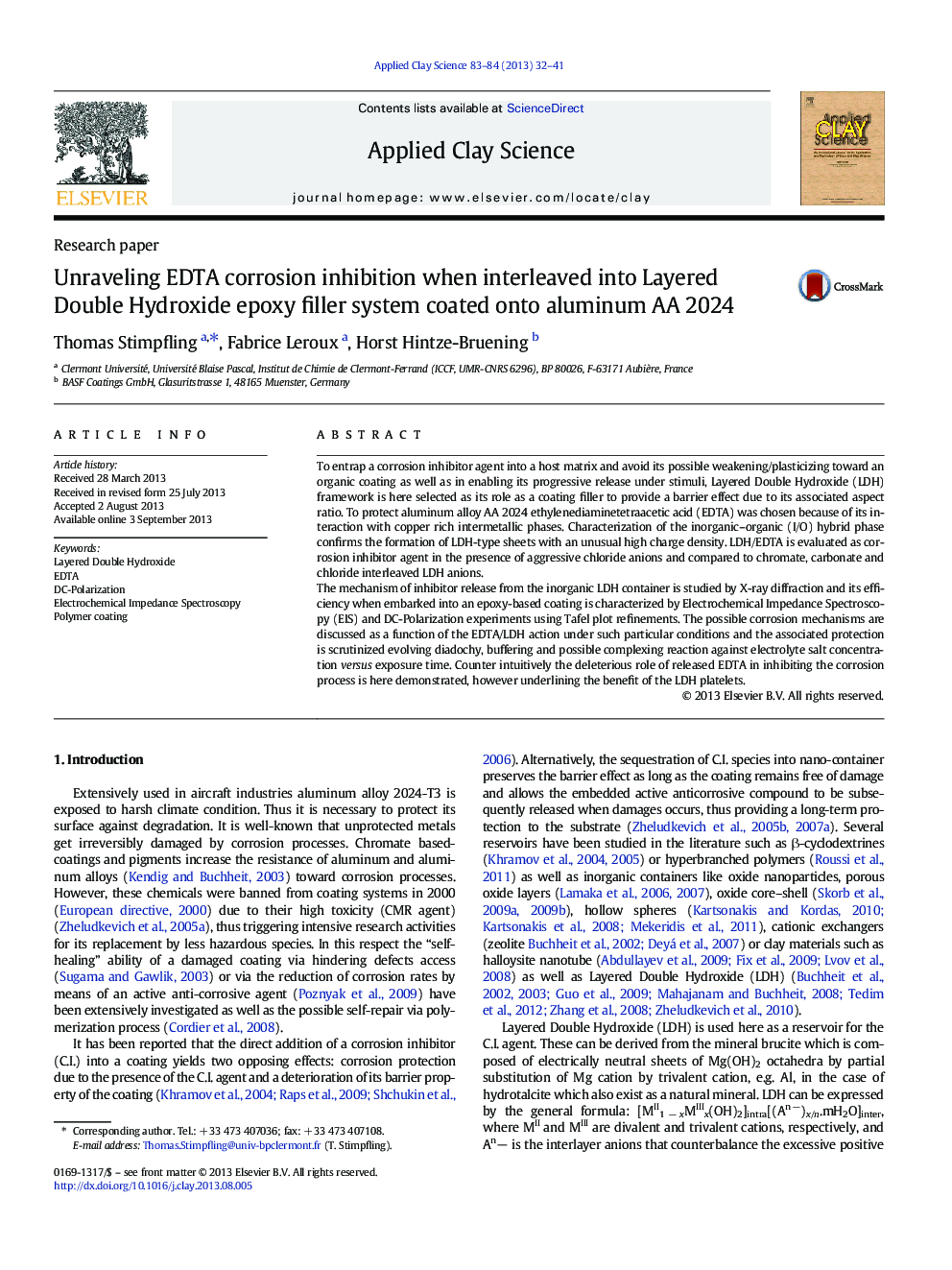| Article ID | Journal | Published Year | Pages | File Type |
|---|---|---|---|---|
| 1694862 | Applied Clay Science | 2013 | 10 Pages |
•EDTA anion intercalated into LDH framework by direct coprecipitation.•Trapping of Cu2 + cations due to buffering effect of EDTA/LDH•Adsorption of amorphous Cu(OH)2 onto platelet surface.•Investigation of coating properties for a long exposure time in corrosive media
To entrap a corrosion inhibitor agent into a host matrix and avoid its possible weakening/plasticizing toward an organic coating as well as in enabling its progressive release under stimuli, Layered Double Hydroxide (LDH) framework is here selected as its role as a coating filler to provide a barrier effect due to its associated aspect ratio. To protect aluminum alloy AA 2024 ethylenediaminetetraacetic acid (EDTA) was chosen because of its interaction with copper rich intermetallic phases. Characterization of the inorganic–organic (I/O) hybrid phase confirms the formation of LDH-type sheets with an unusual high charge density. LDH/EDTA is evaluated as corrosion inhibitor agent in the presence of aggressive chloride anions and compared to chromate, carbonate and chloride interleaved LDH anions.The mechanism of inhibitor release from the inorganic LDH container is studied by X-ray diffraction and its efficiency when embarked into an epoxy-based coating is characterized by Electrochemical Impedance Spectroscopy (EIS) and DC-Polarization experiments using Tafel plot refinements. The possible corrosion mechanisms are discussed as a function of the EDTA/LDH action under such particular conditions and the associated protection is scrutinized evolving diadochy, buffering and possible complexing reaction against electrolyte salt concentration versus exposure time. Counter intuitively the deleterious role of released EDTA in inhibiting the corrosion process is here demonstrated, however underlining the benefit of the LDH platelets.
Graphical abstractFigure optionsDownload full-size imageDownload as PowerPoint slide
